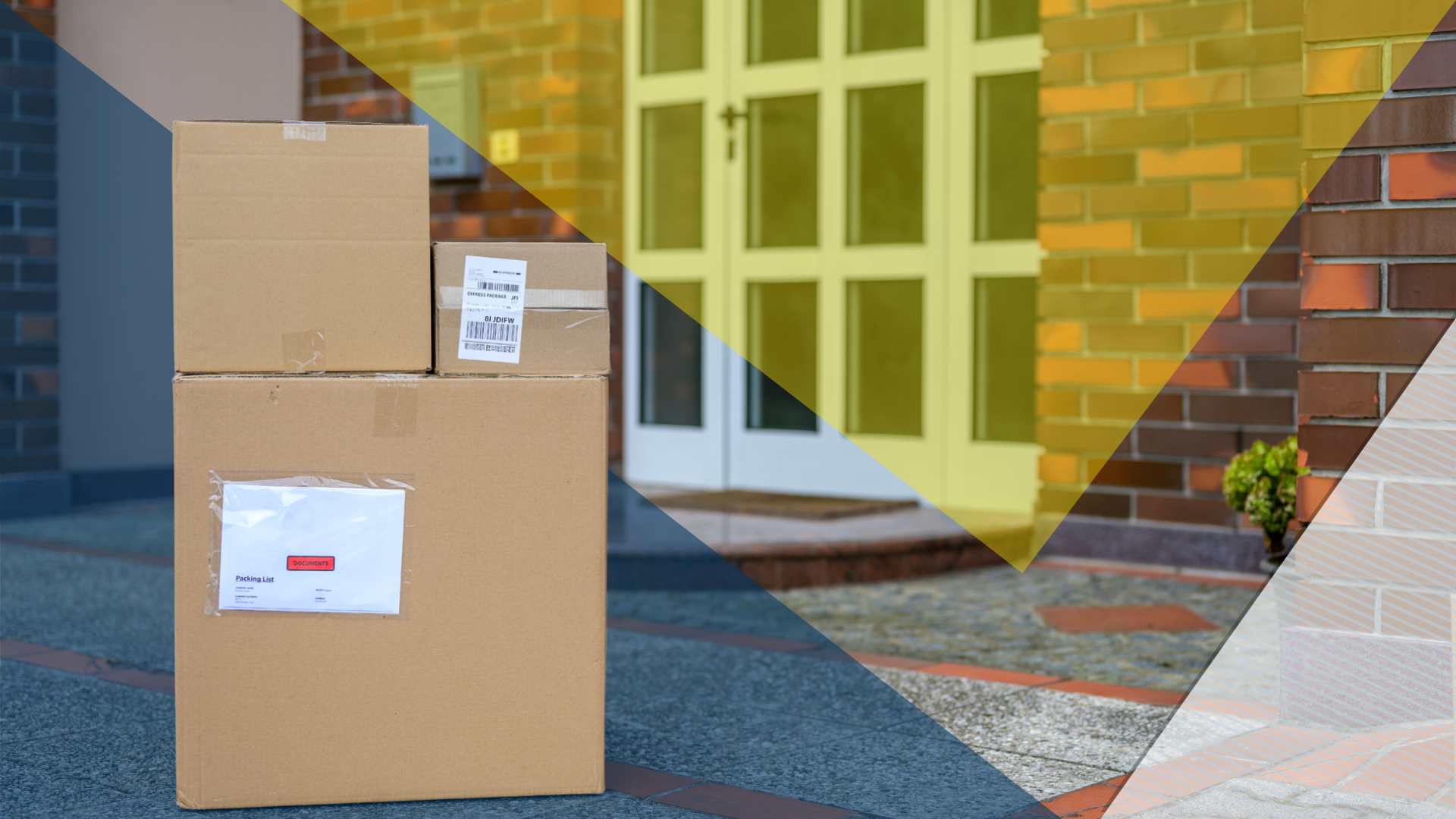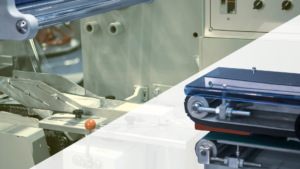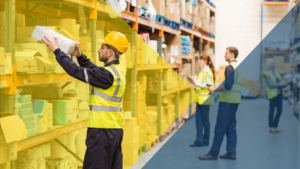In today’s rapidly evolving eCommerce landscape, the “last mile” of the delivery journey has emerged as both a critical challenge and a key opportunity. Often the most intricate and costly segment of the supply chain, last mile delivery represents the final step of a product’s journey from a warehouse to a customer’s doorstep. With express delivery being expected by many consumers today, last mile delivery operations have become increasingly essential. To stay competitive and gain brand loyalty, companies must ensure their last mile logistics operations are efficient for every single order. In this blog article, we will dive into what makes last mile delivery so important in today’s landscape, as well as the challenges that businesses face to ensure the speedy delivery of goods to final consumers.
What is Last Mile Delivery?
Last mile delivery refers to the final step in the transportation and logistics process, where goods are transported from a distribution center or transportation hub to the ultimate destination, which is typically the customer’s doorstep or a retail store. It is called the “last mile” because it represents the last leg of the supply chain journey.
The process of last mile delivery can be broken into 5 main steps:
- Route Planning: Plan the most efficient delivery routes, considering distance, traffic, and delivery time windows to optimize last mile logistics.
- Dispatching: Assign delivery tasks to drivers or couriers, providing them with instructions and delivery details to streamline the last mile process.
- Tracking: Monitor real-time delivery progress using GPS or tracking software to ensure adherence to schedules and address any issues that may arise.
- Delivery Execution: Execute deliveries, following predetermined routes, and ensuring accurate and timely drop-offs while maintaining high-quality customer service.
- Proof of Delivery: Gather evidence of delivery through signatures, photos, or digital signatures, and promptly update the system to maintain transparent and accountable last mile operations.
What is the Last Mile Problem?
Because the last mile is often considered one of the most challenging and costly aspects of logistics and transportation, it is known as “the last mile problem.” The last mile problem refers to the unique set of challenges and complexities associated with delivering goods from a distribution hub or a central location to the final destination. Despite being the shortest segment of the supply chain geographically, the last mile is often the most expensive, time-consuming, and operationally challenging step. Here are some key aspects of the last mile problem:
- High Costs: Last mile delivery accounts for a significant portion of the overall delivery cost (nearly 53% of the total cost of shipping), particularly in densely populated urban areas where congestion, parking, and labor costs are high. The need for specialized vehicles and personnel adds to the expenses.
- Traffic Congestion: Traffic congestion can lead to delays and unpredictable delivery times. Navigating through crowded streets can be time-consuming and frustrating for both delivery drivers and customers.
- Delivery Windows: Customers often expect more precise delivery windows, sometimes even within a few hours. Meeting these expectations can be challenging, especially when dealing with multiple deliveries on the same route.
- Failed Deliveries: Failed deliveries due to customers not being at home or incorrect addresses can be costly and inefficient. Redelivery attempts or returns can significantly add to the operational costs.
- Customer Experience: The last mile is the closest interaction customers have with the delivery service. Any delays, damaged packages, or poor communication can result in a negative customer experience.
- Environmental Impact: The last mile is often associated with a higher environmental footprint due to the need for multiple, shorter trips, which may involve gas-powered delivery vehicles.
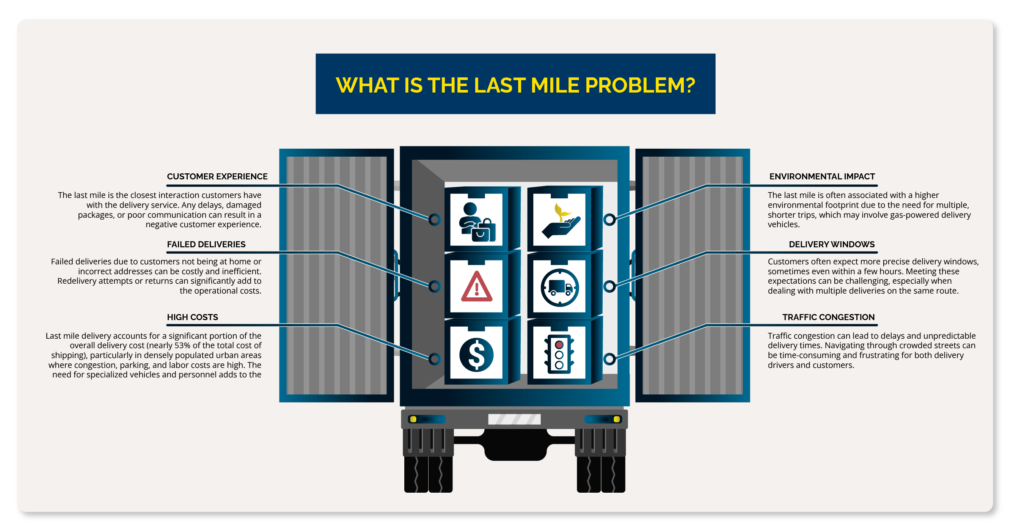
What are the Costs Associated with Last Mile Delivery?
Understanding and managing the costs associated with last mile deliveries are crucial for businesses to remain competitive, provide reliable service, and meet customer expectations while maintaining profitability. Here are some of the primary costs associated with last mile delivery:
- Labor Costs: Labor is a significant component of last mile delivery costs. This includes wages for delivery drivers, warehouse staff, and customer service representatives. Labor costs can vary based on factors like wages, benefits, and the level of automation in the delivery process.
- Fuel and Vehicle Costs: Fuel expenses and vehicle maintenance are significant costs for last mile delivery providers. This includes the cost of purchasing, leasing, or maintaining delivery vehicles, as well as fuel or electricity costs for these vehicles.
- Route Optimization: Implementing efficient delivery routes is essential to reducing costs. Delivery companies invest in route optimization software and technology to minimize travel distances and time, thus reducing fuel and labor costs.
- Packaging and Handling: Packaging materials, including boxes, padding, and labeling, contribute to costs. Efficient handling of packages within warehouses and during transportation is crucial to minimize damages and labor costs.
- Returns and Failed Deliveries: Handling returns and managing failed delivery attempts can be expensive. Companies often need to cover the cost of reattempted deliveries, returns processing, and potential restocking fees.
- Warehouse and Storage Costs: Maintaining distribution centers and storage facilities involves expenses related to rent, utilities, security, and labor for order picking and packing.
How Do 3PL Companies Help with the Last Mile Delivery Problem?
Working with a third-party logistics partner (3PL) can help the challenges of last mile delivery greatly by providing specialized services that can help reduce costs and increase efficiency. Here are some ways that 3PLs can help with last mile delivery:
- Local Expertise: 3PLs typically have a deeper understanding of the area they operate in. Things like traffic patterns, customer preferences, and delivery constraints are just a few areas of expertise that they can bring to the table to help optimize last mile deliveries.
- Technology Integration: 3PL partners offer their customers advanced technology solutions that seamlessly integrate with their existing systems. This allows businesses to monitor deliveries and help better make data-driven decisions for last mile operations.
- Scalability: Depending on demand fluctuations, 3PLs can be super helpful to quickly scale up or down depending on their last mile delivery capacity needs.
- Reduced Costs: Partnering with a 3PL allows businesses to benefit from cost-sharing with other clients as well as reduced maintenance, labor, and fuel costs for deliveries.
- Custom Solutions: Regardless of a businesses specific needs, 3PLs work closely to ensure the services provided are exactly what the client needs. This ensures efficiency and can lead to cost savings.
A 3PL partner like Nautical Manufacturing & Fulfillment will bring specialized knowledge, resources, and technology to the table, allowing businesses to optimize their last mile delivery operations while focusing on their core competencies. This collaboration helps enhance the overall customer experience and competitiveness in today’s e-commerce-driven market.
The Future of Last Mile Delivery
There are a lot of innovations and technological advancements that look to improve last mile delivery and mitigate the last mile problem, helping businesses maintain profitability while also providing quick and satisfactory delivery to their consumers.
Route Optimization Software: Cutting-edge route optimization algorithms and software empower delivery companies to meticulously plan the most efficient routes. These systems consider dynamic factors like traffic conditions, delivery windows, and multiple stops to minimize travel time and fuel consumption, ultimately enhancing efficiency and reducing costs.
Delivery Drones: In select areas, particularly for remote or time-sensitive deliveries, companies are harnessing the potential of delivery drones. These autonomous aerial vehicles adeptly navigate challenging terrain and swiftly reach destinations, circumventing road congestion for expedited last-mile delivery.
Autonomous Vehicles: Self-driving vehicles, encompassing autonomous cars and delivery robots, possess transformative potential within last-mile logistics. These vehicles can operate around the clock, substantially reduce labor costs, and optimize routes for unparalleled efficiency.
Electric Vehicles (EVs): The adoption of electric delivery vehicles is gaining momentum as a sustainable solution to minimize the environmental impact of last-mile deliveries. Governments and businesses are investing in EV infrastructure to facilitate green last-mile logistics.
Micro-Fulfillment Centers: Companies are strategically establishing compact distribution centers in proximity to urban areas, significantly shortening the last mile. These micro-fulfillment centers often heavily leverage automation and robotics for efficient order picking and packing.
Last Mile Delivery Statistics (2023)
Last mile delivery isn’t going anywhere. In fact, growth signals show that it will be an integral part of the logistics process in the coming years. Here are some stats that further prove this.
Last Mile Delivery Market
- By 2027, the global last mile delivery market is expected to grow to more than 200 billion U.S. dollars from 108.1 billion U.S. dollars in 2020
- The global last mile delivery market expects a compound annual growth rate (CAGR) of 9.29% from 2021-2027
Demand For Same Day/Two Day Delivery
- Close to 60% of shoppers pay for faster delivery, with 69% paying more for next-day delivery.
- 73% of consumers view fast delivery as critical online shopping criteria
Delivery Delays
- 84% of individuals report they are unlikely to return as a customer after just one negative delivery experience
- 87% expect brands to make amends when they miss a delivery date
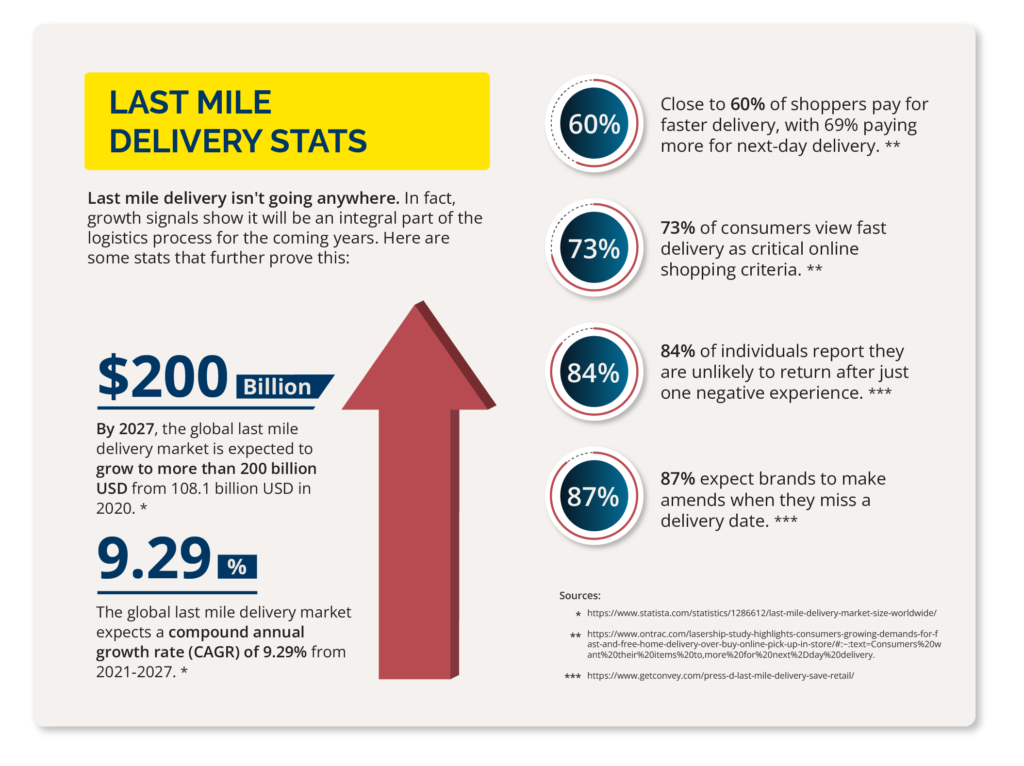
Last Mile Delivery FAQ
How Is Last Mile Delivery Done?
Last mile delivery involves moving a product from a distribution center or warehouse to its final destination, often the customer’s home. It’s usually the costliest part of the delivery process due to multiple stops. This can be accomplished using a company’s delivery fleet, third-party services, or a combination of both.
How Long is the Last Mile Delivery Process?
The duration of the last mile delivery process varies depending on the carrier, delivery type, and travel distance. In general, last mile delivery typically ranges from one to three days.
Why Is Last Mile Delivery Important?
Last mile delivery is crucial because it represents the final step in delivering a product to the customer’s doorstep. It directly influences customer satisfaction, cost efficiency, and the overall effectiveness of the supply chain.
What Are Some Challenges In Last Mile Delivery?
Last mile delivery faces various challenges that are known as “the last mile problem”. These challenges include traffic congestion, urban density, delivery window restrictions, package security, and the need for sustainable practices.
Are there sustainable options for last mile delivery?
Yes, there are sustainable options for last mile delivery, including electric vehicles, bicycle couriers, and the potential use of delivery drones in the future.
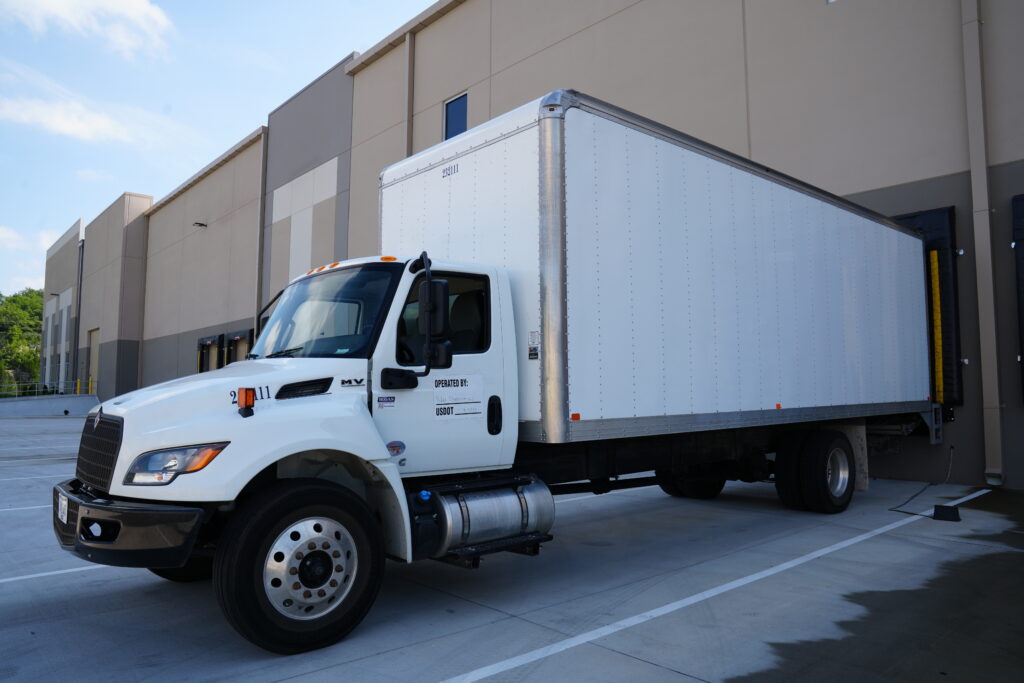
Working With A Reliable Last Mile Delivery Partner
If you are a Kansas City business looking for a reliable last mile delivery partner, Nautical has the services for you! We work with our partner company Tidal Trucking, that provides final mile delivery, contract delivery services, and much more. With our local full-service 3PL warehouse, we can ensure your products are fulfilled quickly and efficiently– every time.
